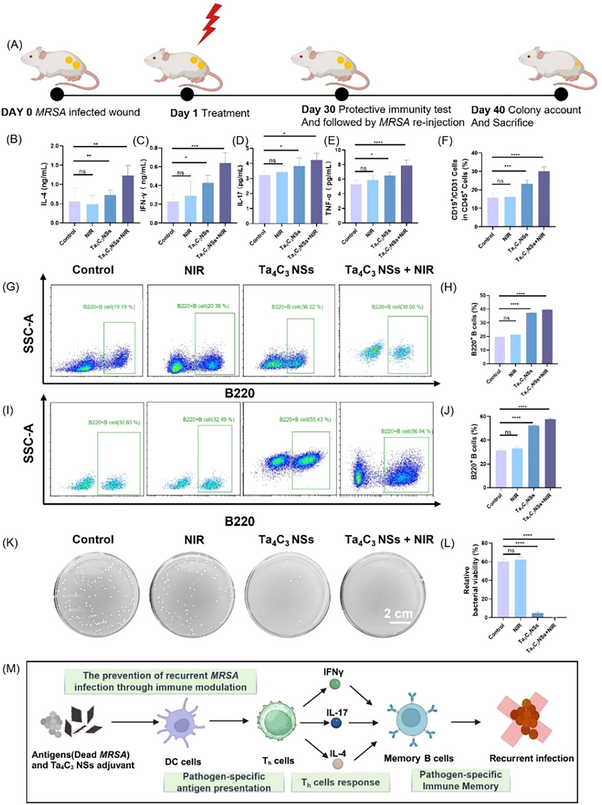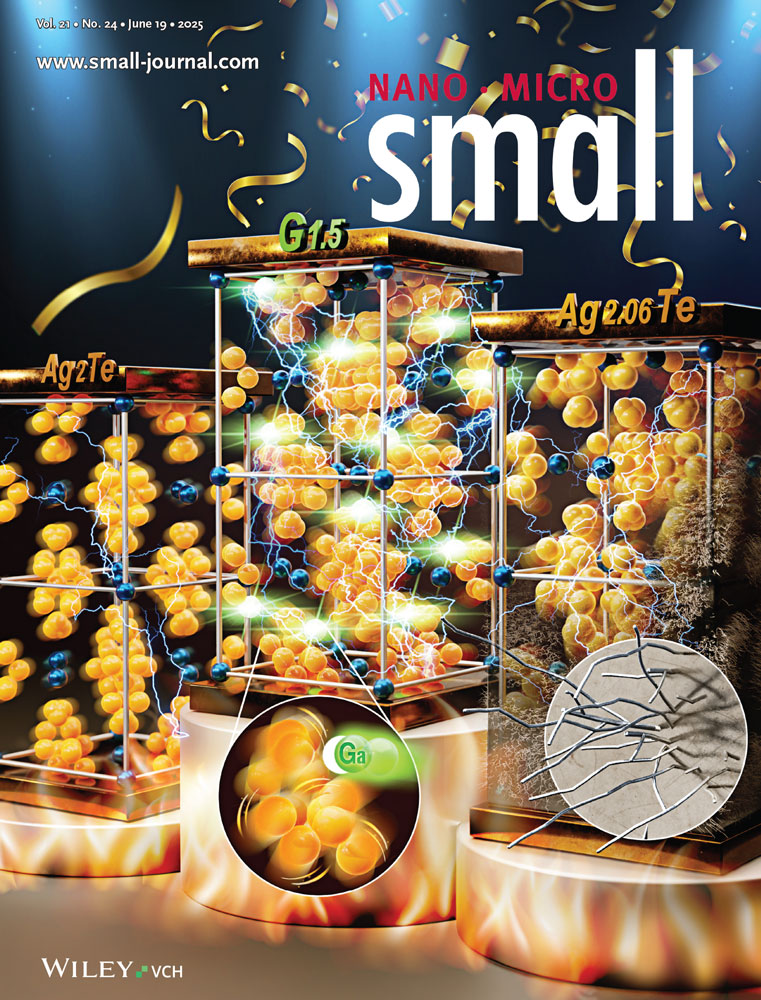Correction to “Ta4C3 Nanosheets as a Novel Therapeutic Platform for Photothermal-Driven ROS Scavenging and Immune Activation Against Antibiotic-Resistant Infections in Diabetic Wounds”
small, 2024, 20, 2400741
We sincerely acknowledge an error in the originally published Figure 5i (Ta₄C₃ NSs + NIR group). The correct image is provided below. We confirm that this correction does not affect the scientific conclusions or overall interpretation of the study. We apologize for any confusion this may have caused and appreciate the readers' understanding:

Figure 5. Assessing Immune Memory Triggered by Ta4C3 NSs and NIR in a Recurrent MRSA Infection Model. A) Illustrates the development of the abscess model and the treatment strategy. On Day 30, the concentrations of serum interleukins IL-4 B), IFN𝛾 C), IL-17 D), and TNF-𝛼 E) were quantified (mean ± SEM, n = 5). F) To evaluate memory B (mB) cells, blood single-cell suspensions were subjected to flow cytometry (FCM) analysis following staining with CD45, CD31, and CD19 antibodies (mean ± SEM, n = 5). G–J) The study included an assessment of CD45+ B220+ memory B cells in lymph nodes (G,H) and spleens (I,J) of mice across different treatment groups on Day 30 (mean ± SEM, n = 5). K,L) The formation of MRSA colonies on LB-agar plates K) and the tally of surviving bacteria L) were documented on day 30. M) Conceptual representation of the mechanism by which Ta4C3 NSs prevent recurrent MRSA infections. Significance levels are marked as ns (not significant), *p < 0.05, **p < 0.01, ***p < 0.001, and ****p < 0.0001, as determined by one-way ANOVA.
We apologize for this error.




